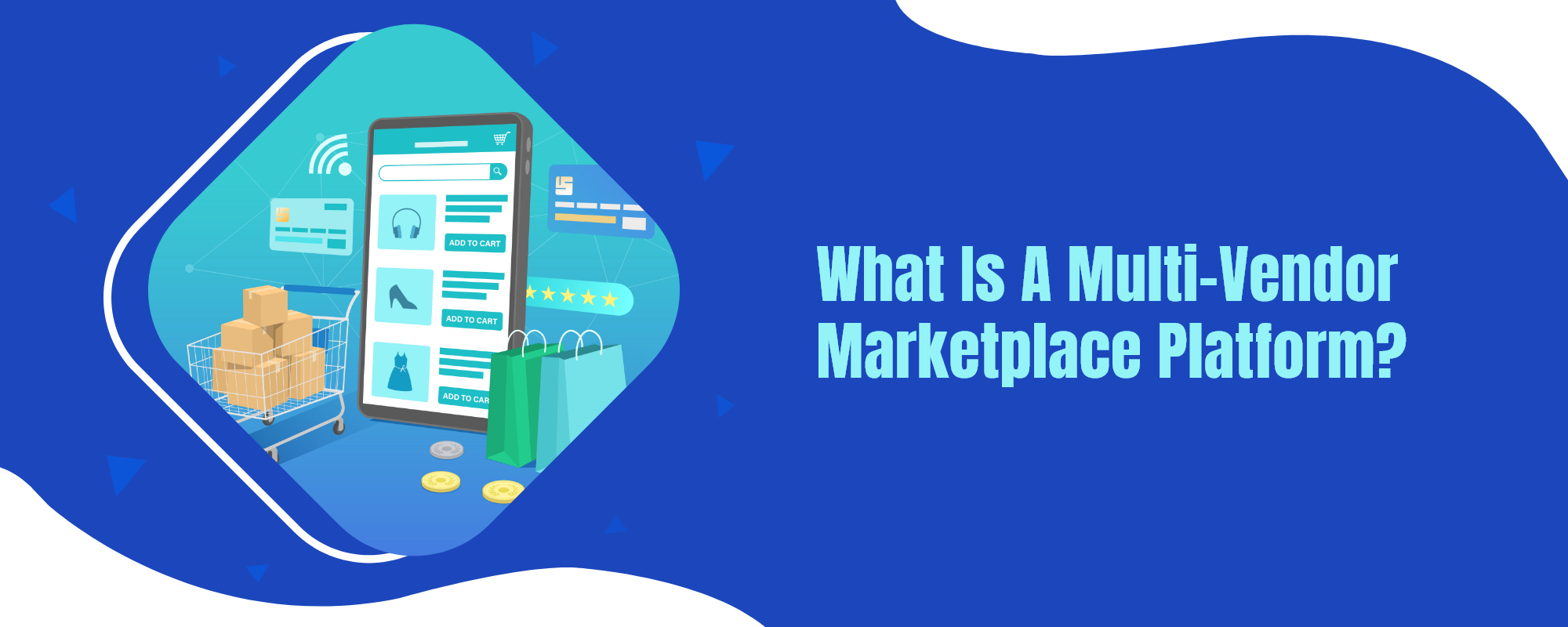Until a few decades ago, shopping online was considered a novel concept, and only a small group of computer geeks would use websites like eBay to look for unusual items. Online purchasing took up gradually but steadily as the first squealing dial-up sounds made their way into our homes, and multi-vendor marketplaces were just existing offline.
It’s becoming increasingly difficult to overlook the fact that roughly two-thirds of global internet transactions occur in marketplaces as ecommerce continues to prosper, and total worldwide expenditure is projected to rocket to $7 trillion by 2025. In-depth research into this topic is warranted because of the high volume of potential customers and business that marketplaces attract.
What is a Multi-vendor Marketplace?
A multi-vendor marketplace is a type of online marketplace that allows multiple sellers to list and promote their products under a single virtual roof. The selection available to buyers at a multi-vendor marketplace is vast, and the pool of potential buyers available to vendors is correspondingly larger.
Multi-vendor marketplaces are similar to large retail centers. A large number of vendors are all selling the same kinds of things in the same place. The ability to host several sellers is a major differentiator between a multi-vendor marketplace and a standard e-commerce website.
Read more: Creating a Successful Ecommerce Marketplace Business Model

Why Multi-vendor Marketplace is in demand?
This recent focus on multi-vendor platforms is indicative of how recently the concept has gained traction. That’s because e-commerce start-up owners didn’t realize the potential profits from joining an existing network of multi-vendor web stores.
Here are some of the reasons why wholesalers, brands, and budding entrepreneurs are starting or joining multi-vendor stores.
- Multi-vendor platforms attract small sellers who don’t want to spend the money on their own e-commerce site but would like to increase sales
- To reach a wider audience and expand their customer base on a national or international scale without breaking the bank, many sellers have turned to multi-vendor marketplace platforms
- By participating in marketplaces that already have a large customer base, e-commerce business owners can quickly expand their customer base and increase revenues
The following are the primary ways in which value is created for customers:
- The unlimited variety of products available
- Offering reasonable rates
- Better customer support
- Discount sale prices from time to time
- Review-based buying for comparing products
Multi-vendor Marketplace Business Model
Technology in multi-vendor marketplaces allows for the listing and selling of thousands of products from a wide variety of categories by a large number of sellers. Since platform owners often do not stock any products themselves, the multivendor business model is also referred to as the zero inventory model.
The multi-vendor business model operates as follows:
- Seller signs up for a marketplace account
- A vendor-facing dashboard allows them to list and manage their products
- When a purchase is made, the platform will handle the financial transaction and help the vendor with packaging and shipping
- The multi-vendor store keeps a minimal markup and sends the balance of the proceeds to the vendor
- The vendor’s primary goal is to boost sales and, consequently, revenue and profit
How does a Multi-vendor marketplace earn revenue?
With so many potential customers, multi-vendor e-commerce platforms could generate a lot of money. You can make money with a multi-vendor store in the following ways:
The majority of a shop’s income comes from commissions on product sales. The platform operators make a nominal profit from the sale of each item and then return the remaining funds to the vendors.
Multi-seller platforms that have millions of daily visitors typically include in-store advertising available to sellers who are willing to pay an amount to have their products highlighted. This is a major source of revenue for Flipkart.
Online retailers with a large consumer base often receive exclusive distribution rights to new products from well-known brands. Because of the high costs associated with managing the supply chain, smartphone manufacturers often partner with third-party retailers like Amazon as official resellers of their products.
Most of the time, the largest online retailers deal with brands directly to introduce their flagship products to the market. Multi-vendor markets are able to generate higher revenues because they cut out the intermediaries. The introduction of a new product into the market is another way in which e-commerce companies can cause a stir. The Kindle from Amazon is a brilliant example of this.
Read more: What Is A Marketplace Business Model?
Most online companies provide memberships to their customers in exchange for recurring revenue, and members enjoy perks like free delivery, simplified returns, deeper discounts, and priority service. Customers who shop frequently benefit greatly from such memberships.
Despite the fact that the following are some of the most significant monetization opportunities available to multi-vendor store owners, many minor ideas can be tested to increase profits. Having said that, the only thing that can truly ensure the flexibility to incorporate all of the above revenue strategies is a robust multi-vendor shop platform.
How to develop a Multi-vendor Marketplace Platform?
Whether you’re starting from scratch with an e-commerce site or bringing your current offline business online, the e-commerce platform you choose is crucial.
If you run a small business, it may be worthwhile to seek out a solution that is less complicated, more economical, and needs only a minimal amount of setup and virtually no technical expertise on your part, like a prebuilt multi-vendor marketplace framework. On the other hand, if the day-to-day operations of your business are very detailed, you will require a solution that is both reliable and highly customizable to build up your multi-vendor marketplace platform.










